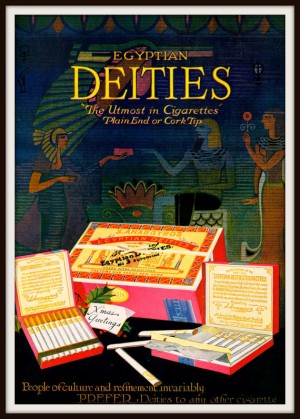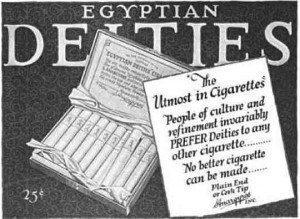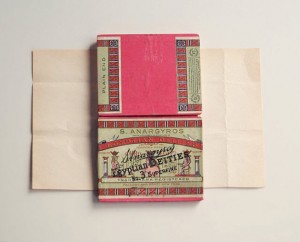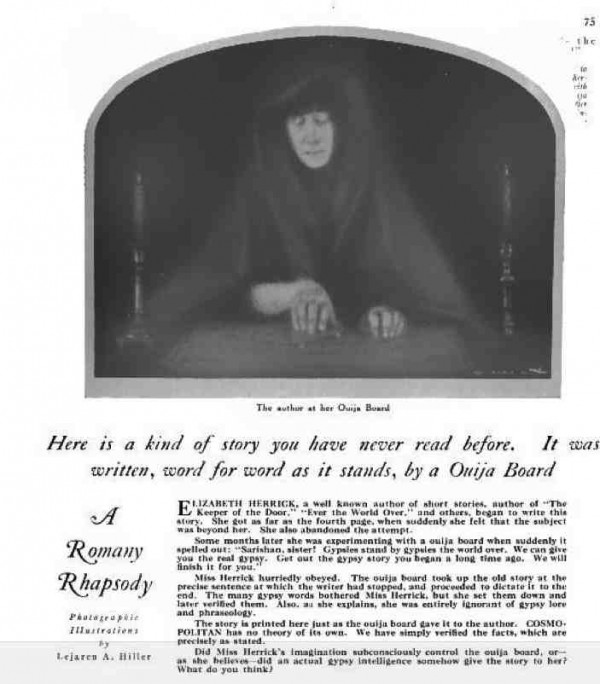1920s
1970s fashion, as imagined in the 1920s
Predictions from 1928 of how women would be dressing in 1978 and beyond, modeled at the "Dream of Fair Women" charity ball. From the San Antonio Light - May 6, 1928:"Miss Faith Celli, of London, wore her conception of what the nun of 1980 will wear. It is immediately recognizable as a convent garb, but shown unmistakably the influence of Reinhardt's "The Miracle," particularly in the tall headgear and collar forming plane formation. Several clergymen who saw the costume pronounced it an ideal one, expressing splendidly the simplicity and seclusion of life in a convent of the future."
"It seems to be the more or less general opinion of the women who participate in the ball that the women of the future will go in less and less for skirts. Mrs. Donald Armstrong Jones appeared in a charming walking suit consisting of loose jacket of soft, clinging material, and breeches marking a complete departure from the present day 'plus-fours.'"


Posted By: Alex - Sun Sep 01, 2013 -
Comments (6)
Category: Fashion, 1920s, Yesterday’s Tomorrows
Egyptian Deities Cigarettes






[Click on any image to enlarge]
After our look at Murad cigarettes, here's another brand of the period. I wonder how well they would sell in today's geopolitical climate? And isn't there something sacrilegious about naming your product after another religion's sacred gods?
Posted By: Paul - Sun Aug 25, 2013 -
Comments (6)
Category: Art, Business, Advertising, Products, Tobacco and Smoking, 1920s, Middle East
A Romany Rhapsody

I sure wish I could get a ouija board to do all my writing for me!
Read the story here.
Posted By: Paul - Tue Aug 20, 2013 -
Comments (8)
Category: Literature, New Age, Superstition, 1920s
Mystery Gadget 18

Take your best guess first!
The answer is here.
Posted By: Paul - Sun Aug 18, 2013 -
Comments (9)
Category: Technology, 1920s
Man inherits 143 Trillion Marks
From the Daily Kennebec Journal - Aug 23, 1928:
The deceased left an estate of approximately $800,000, aside from one hundred and forty-three trillion German marks which had cost him about $6,000. The will is unique in the fact that the executor is directed to hold these marks until such time as they shall be redeemed rather than to appraise them as practically worthless.
The following clause in the will covers this point:
"In the belief that the German people will ultimately require redemption of all outstanding German paper marks issued during the World War of 1914-1918 at a reasonable price, I direct my said executor and trustee to continue to hold the German paper marks of such issue as may belong to me at the time of my death (amounting to about one hundred and forty-three trillion marks according to the American method of reckoning) until such marks can be sold at about the cost thereof to me, namely about $6000."
Although the article says the trillions of marks were acquired during World War I, that must be wrong. The period of German hyperinflation occurred from 1921-1924.

Posted By: Alex - Sun Jul 07, 2013 -
Comments (3)
Category: Money, 1920s
Miss Treasury Department

Shown is Helen G. Sweeney who won the title of Miss Washington D.C. back in 1924. But she also served, more specifically, as Miss Treasury Department.
Apparently young women were chosen to represent all the various offices of the federal government. So in addition to Miss Treasury Department there was:
- Miss Bureau of Standards (Betty Grace Tucker)
- Miss Veterans Bureau (Elsie L. Schulze)
- Miss Commerce (Estelle Meisenheimer)
- Miss Navy (Etelka Kearney)
- Miss State Department (Adeline Shuler)
- Miss Post Office (Ellen S. Waller)
- Miss Department of Justice (Helen T. Gallagher)
- Miss Civil Service (Irma Beaver)
- Miss Labor (Margaret McKinley)
- Miss Bureau of Engraving (Elizabeth Thompson)
- Miss War Department (Pearl B. Henry)
- Miss Government Printing Office (Evelen M. Smith)
- Miss Agriculture (Jewell Sager)
- Miss Interior (Minnie Jean)
- Miss Federation (Margaret M. Mattare)
- Miss Interstate Commerce (Sarah M. Boyle)
- Miss U.S. Employee's Compensation Commission (Edith S. Webb)
Posted By: Alex - Sat Jun 22, 2013 -
Comments (6)
Category: Beauty, Ugliness and Other Aesthetic Issues, Government, 1920s
Fishing for Humans
This would be the PETA-approved version of fishing. From the Wilmington Sunday Morning Star - Jan 6, 1929.
Posted By: Alex - Sat May 25, 2013 -
Comments (1)
Category: Sports, 1920s
The Six Brown Brothers

Blackface, clownsuits and saxophones: a winning combo in any era!
Learn the whole story here.
Posted By: Paul - Sun May 05, 2013 -
Comments (0)
Category: Clowns, Music, Stereotypes and Cliches, 1910s, 1920s, 1930s
Singing Eskimos

In the picture, MacMillan is second from right. The guy standing behind him is Eugene McDonald, founder of Zenith Radio Corporation. His company built the special short wave radio gear used on the expedition. All others in the picture are the singing eskimos.
Posted By: Alex - Tue Apr 30, 2013 -
Comments (3)
Category: Music, Radio, Experiments, 1920s
Los Angeles 100,000 years in the future

A headline in the Los Angeles Times, Apr 15, 1923. The author of the article, Ransome Sutton, elaborated:
So much concerning the inhabitants of Los Angeles in the year 101,923 AD.
Within the memory of old men, Los Angeles has grown into a city of some 700,000 inhabitants. Barring earthquakes, glaciers, acts of God and the public enemy, it should continue to grow, at an increasing rate, so long as mouths can be fed and the inhabitants housed. For it affords attractions of everlasting value — summery sunshine, health, rare air, good soil, scenery, the mountains in the background and in front the sea. Railroads extending to the eastward like a fan, and ocean routes radiating to the westward. Here, more surely than almost anywhere, continuous growth is insured.
Of course, he failed to foresee how bizarre many of the residents of Los Angeles would have become a mere 90 years later, let alone 100,000 years in the future!
Posted By: Alex - Wed Apr 24, 2013 -
Comments (11)
Category: Utopias and Dystopias, 1920s, Yesterday’s Tomorrows

| Who We Are |
|---|
| Alex Boese Alex is the creator and curator of the Museum of Hoaxes. He's also the author of various weird, non-fiction, science-themed books such as Elephants on Acid and Psychedelic Apes. Paul Di Filippo Paul has been paid to put weird ideas into fictional form for over thirty years, in his career as a noted science fiction writer. He has recently begun blogging on many curious topics with three fellow writers at The Inferior 4+1. Contact Us |




